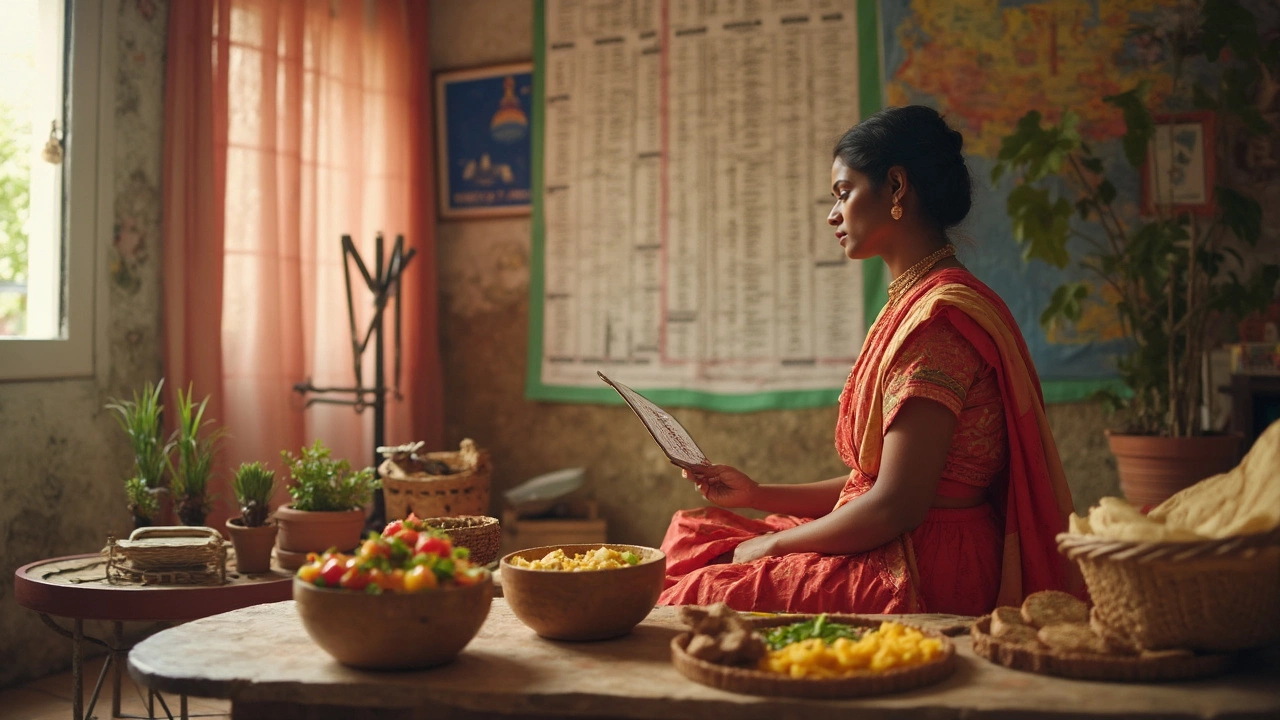Health Insights for Indian Cooking
When you think about Health, the overall state of physical and mental well‑being, especially as it relates to what we eat. Also known as Wellness, it guides every choice from spice blends to cooking methods. Closely linked is Nutrition, the science of how foods provide energy, protein, vitamins and minerals, which directly shapes our daily diet. Adding Food Safety, practices that prevent contamination and preserve freshness ensures that the meals we love stay safe and beneficial. Together, these concepts form the backbone of a healthy Indian kitchen.
Why does Health matter when you’re cooking Indian dishes? First, the region’s vibrant spices aren’t just flavor fireworks—they’re also packed with antioxidants, anti‑inflammatory compounds, and sometimes natural probiotics. For example, turmeric’s curcumin supports joint comfort, while fermented items like idli batter boost gut health. Second, the traditional Indian diet balances complex carbs, legumes, and dairy, delivering steady energy without spikes. Understanding how dal, rice, and paneer work together helps you design meals that keep blood sugar stable, which is crucial for long‑term health.
Nutrition isn’t a one‑size‑fit‑all idea; it varies based on the ingredient and cooking method. Lentils (dal) offer high protein and fiber, yet soaking them can reduce antinutrients and improve digestibility. Fresh lemon added to biryani not only lifts flavor but also adds vitamin C, which enhances iron absorption from the rice and meat. Similarly, choosing the right milk for paneer—full‑fat versus low‑fat—affects the final cheese’s texture and its calcium yield. These small tweaks turn a tasty recipe into a nutritionally smarter one.
Food safety practices are often overlooked in home kitchens, but they’re vital for health. Homemade chutney, for instance, can last up to two weeks in the fridge if stored in airtight jars and kept at the right temperature. Canning, when done correctly, extends shelf life without compromising safety, as long as you follow acidity guidelines. Spotting spoilage early—like off‑smells or mold—prevents foodborne illness and keeps your meals enjoyable.
One recurring theme across many Indian meals is sugar intake. Studies show certain ethnic groups consume more added sugar, which can raise the risk of metabolic issues. Balancing sweet dishes with fruit, using natural sweeteners sparingly, and pairing sugary treats with high‑fiber foods can mitigate those effects. Understanding the link between sugar and health helps you make smarter dessert choices without giving up flavor.
The concept of a balanced diet extends beyond individual meals. Incorporating a variety of fruits—especially those high in antioxidants like berries or guava—supports immunity and reduces oxidative stress. Pairing these fruits with protein‑rich dal or paneer creates a complete nutritional profile. This holistic view mirrors the traditional Indian approach of combining multiple food groups for a harmonious plate.
Practical Steps to Boost Your Kitchen’s Health Quotient
Start by evaluating the ingredients you use most. Swap refined flour for whole‑grain alternatives in roti dough to increase fiber. Add a pinch of baking soda to dosa batter for fluffier results, but remember it also alters the batter’s pH, which can affect fermentation speed. When making curry, you don’t always need turmeric for color—cumin and coriander can provide depth while reducing unnecessary calories.
Finally, keep an eye on cooking techniques. Steaming vegetables preserves nutrients better than boiling, and grilling meats at moderate heat reduces harmful compounds. By integrating these evidence‑based tips, you’ll notice smoother digestion, steadier energy, and meals that taste as good as they feel.
Below you’ll find a curated collection of articles that dive deeper into each of these topics—whether you’re curious about the science behind lemon in biryani, the nutrition facts of dal, or how to store chutney safely. Explore the full range to turn everyday cooking into a healthier, more enjoyable experience.

beauty tips - well health organic.com
Explore the world of organic beauty tips designed to keep you looking and feeling your best. Discover practical routines and daily habits that use natural ingredients for healthier skin, hair, and body. Embrace a more sustainable and eco-friendly approach to beauty while ensuring your overall wellness. Delve into expert advice and useful tips that are easy to integrate into everyday life. Elevate your beauty regimen with natural, organic solutions today.

What is BMI? A Simple Guide to Measuring Your Health
Body Mass Index (BMI) is a useful tool to gauge your overall health using a simple formula that correlates your weight and height. This article breaks down the basics of BMI, offers practical steps on calculating it, and provides insights into its significance. Learn how to use a calorie calculator and understand how many chapatis you should eat in a day. Discover the legal and local aspects of health monitoring through BMI.

Chapati Intake Per Day: What’s Best for Your Health?
Deciding how many chapatis to eat daily isn't just a matter of taste—it's about aligning your intake with health goals. Considering factors like BMI, the calorie content of chapatis, and nutritional needs, this guide helps you find the right balance. You'll learn practical tips for managing chapati consumption while maintaining a healthy lifestyle. Dive into the local variations of chapati and how to calculate your perfect intake using calorie calculators.